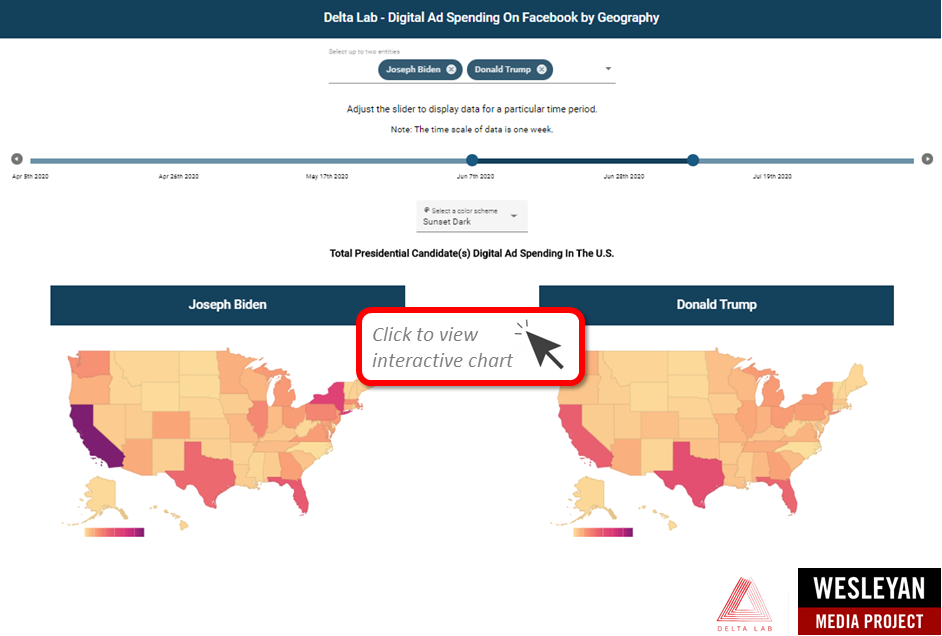By Roshaan Siddiqui (’22) and Pavel Oleinikov
In its tracking of campaign spending on Facebook, Wesleyan Media Project focuses on identifying the sources of money behind the ads. Facebook requires that advertisers post the “Paid for By” disclaimer, listing the organization that paid for the ad. Often, the same organization will engage dozens of Facebook pages to post the ads. Together with the Center for Responsible Politics, WMP matches the Facebook records against external data to identify the sponsors behind political ads. The numbers you are seeing in the map are an aggregation of the amounts posted by Facebook in the spending reports on the Facebook Ad Library webpage. We report the spending by week, with Sunday being the first day of a week.
Please click here (or click the image below) to use this interactive tool.


